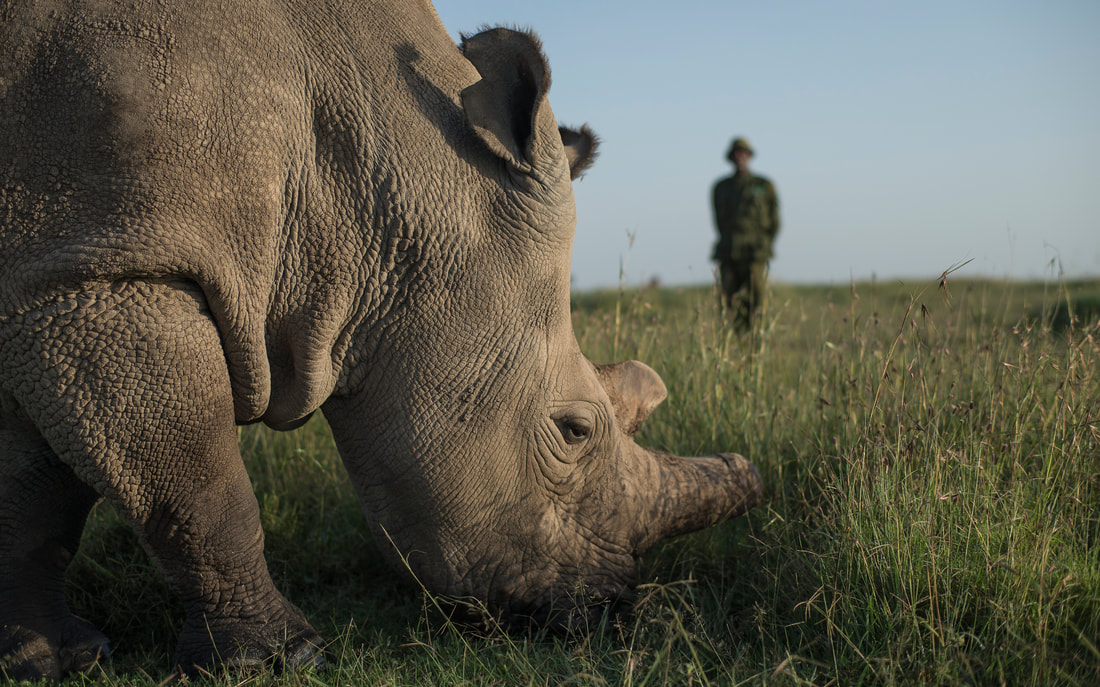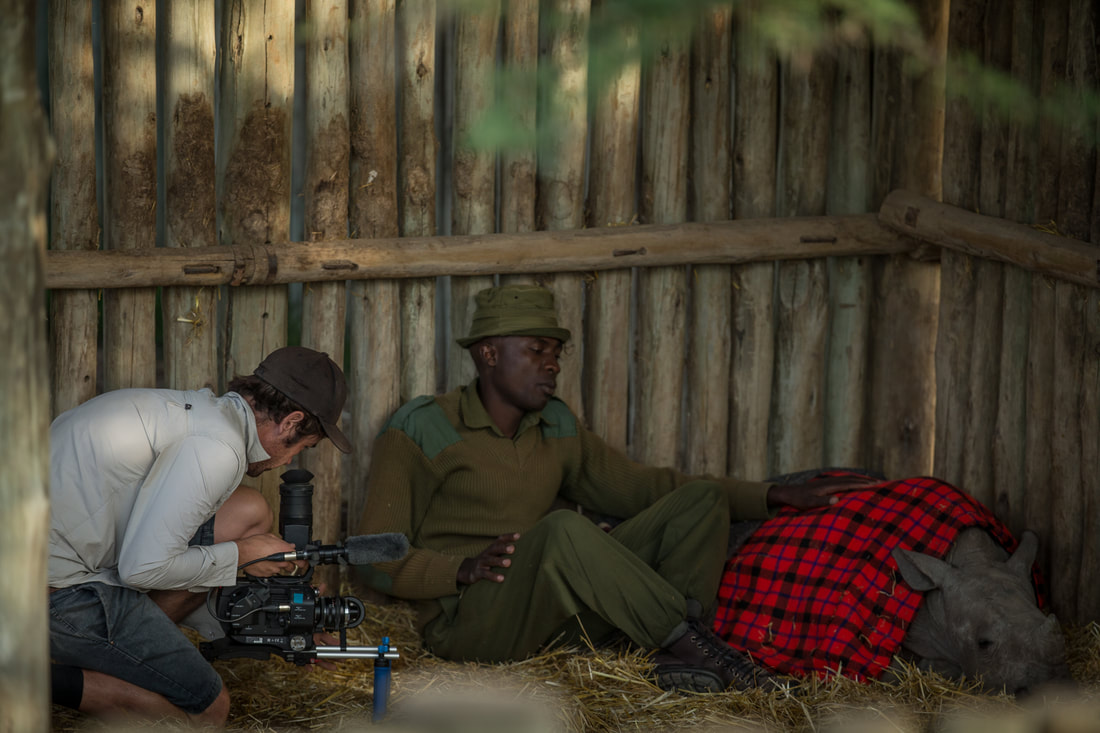|
We reached out to our festival filmmakers to ask them five questions about the experience of making their films.
What inspired the story?
Producer Sam Suter: As a team team we were moved by these individuals. They are geniune, passionate, humble and knowledgeable. It was a privilege to spend time with them. Some of those featured in the film are part of the anti-poaching init at Ol Pejeta, some manage human-wildlife conflict in the area, and others are the caregivers and protectors of the last remaining white rhinos on earth. These animals are gaurded 24/7 at the conversation. There are only three northern white rhinos left in the world – Sudan (the last male northern white rhino at 43 years old), Najin (Sudan’s daughter at 27 years old) and Fatu (Najin’s daughter at 16 years old). They all were raised in a zoo in the Czech Republic and were brought to Ol Pejeta in 2009 in the hopes that they would breed in a more natural environment. Sadly all attempts at breeding have been unsuccessful thus far and Ol Pejeta, alongside other individuals and organisations are working hard to attempt to use IVF (In Vitro Fertilization) technology to save this subspecies from extinction. Our hope is that this will be successful and we can one day have a steady population of these magnificent rhino again. Describe some of the challenges faced while making this film. SS: One of the biggest challenges was dealing with very sensitive animals such as rhino’s coupled with the fact that they were the last three northern white rhino’s on the planet. This meant at all times we had to be within a safe distance from the rhino as to not disturb there daily routine as any form of stress can have dire consequences. It also meant that the amount of time we had with the rhino’s was very limited so we had to maximize the few hours we had on a daily basis, to tell the whole story, which is never easy. You are also dealing with an animal that can be very unpredictable on its day so one would always have to listen to the rhino caretakers and follow their lead. How do you approach story telling? SS: The fundamental part of story telling is to give the audience a good idea of what message you are conveying in an allotted amount of time. The viewer needs to walk away after watching your film, knowing that their perception has been altered as a result of what they have just watched. To tell that story you need to identify key characters and key themes and then build an emotive story line around those factors that will captivate the audience. As with all film making planning is key as a well planned production will go a long way to accomplishing a strong narrative. So know who your key characters are and know what your message is that you are trying to convey. Working with wild life and endangered species, we are very sensitive when filming and always aim to document people and nature in a genuine way, connecting with our subjects, ensuring depth to our video product. What impact do you hope this film will have? SS: United for Wildlife, through this film, aims to give Rangers a voice. They are the ones fighting the war on the ground and working tirelessly in the field to protect our wildlife. And it’s about time we celebrate these men and women that are doing this work all over Africa, and the world. These are people with incredible insight and knowledge. Amongst them you will find skills and expertise that have been fine tuned to deal with everyday challenges like we could never imagine dealing with. They are doing good work and its key to help them expand upon what they are doing. Often we focus on the wrong individuals when it comes to controversial topics like conservation – and it is about time the world tuned into what people in the thick of it have to say about wildlife in Africa. This film focuses on the rangers working at the Ol Pejeta Conservancy – but they represent so many other rangers – men and women. Were there any surprising or meaningful experiences you want to share? SS: It was meaningful, sad and an honor to meet Sudan – the last make Northern white rhino. We have filmed the Southern white rhino many times in Southern Africa and we did not expect that these two subspecies of rhino would be so physically different. We were taken aback by this amazing prehistoric beast and the crew just fell silent from spending time with him and coming to the realization that these three white rhinos are the last of this subspecies, It was hard hitting. The Northern white rhino has a larger head, shorter legs, hairer ears and other features that make it different to the Southern white rhino. Sudan is incredible as such a large rhino, with incredible presence and amazing relationship with carers. Meeting all three of the last Northern white rhino – Sudan, Ninjin and Fatu was amazing.
0 Comments
Leave a Reply. |
Archives
March 2024
Categories
All
|
Contact UsJackson Wild
240 S. Glenwood, Suite 102 PO Box 3940 Jackson, WY 83001 307-200-3286 info@jacksonwild.org |



 RSS Feed
RSS Feed